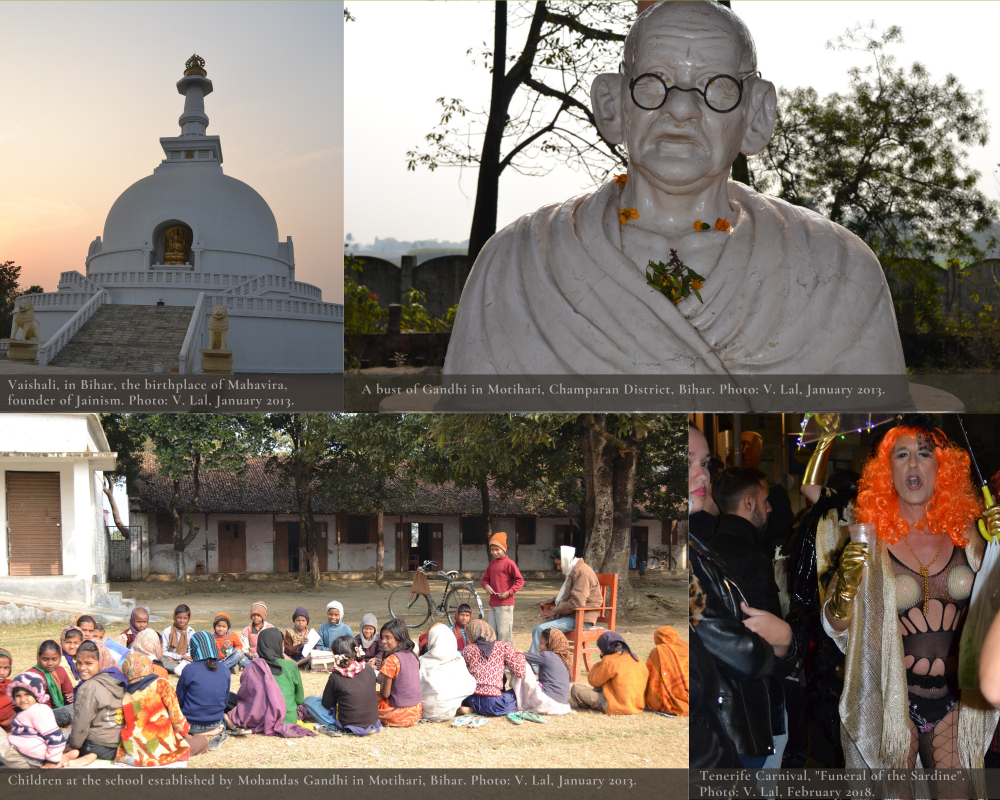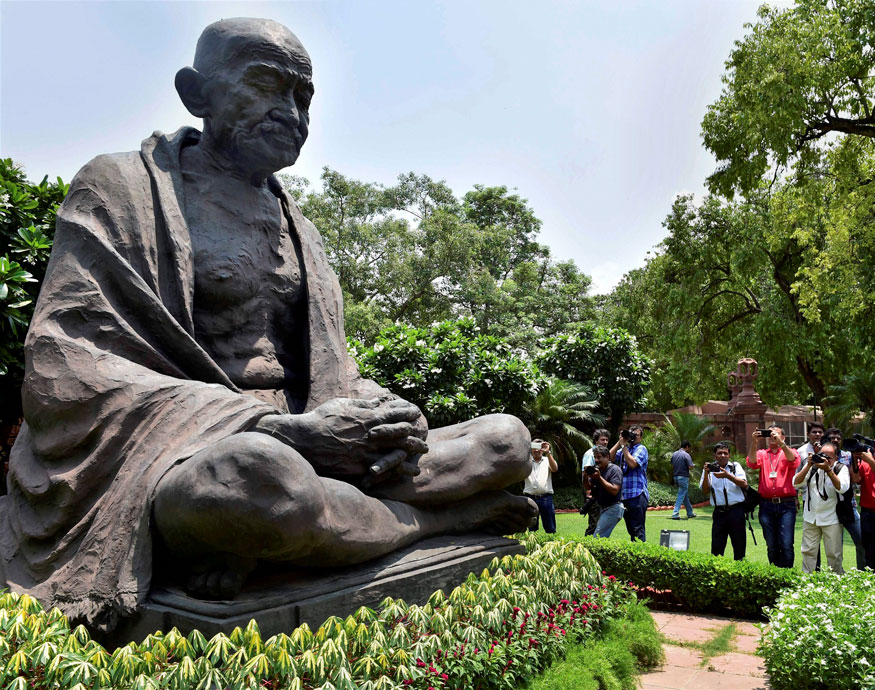Vinay Lal
(On the occasion of Gandhi Jayanti, or, Mahatma Gandhi’s Birthday)
Mohandas Gandhi forged such a distinctive path in so many spheres of life that it should come as no surprise that his conception of secularism is also at odds with nearly every commonplace understanding of secularism. Indeed, as my argument unfolds, it will become amply clear that Gandhi’s adherence to secularism entailed a deepening of religious belief; as he was to tell some English friends who came to see him on the evening of 31 December 1947, ‘what I want to do and what I have been eagerly doing for the last sixty years is atmadarshan [self-realization]…. I do not boast of my perfect success at it. But, little by little, I am inching towards it. And my every worldly (secular) engagement is carried out just from this perspective.’
The adherents of a rigorous conception of secularism have long subscribed to the formula of the separation of ‘church’ and ‘state’. Whether such a conception of secularism has existed anywhere even in the West is doubtful, but certainly, as is widely recognized, secularism so understood never had any traction in India except among a miniscule number of people who self-consciously styled themselves atheists, rationalists, and sometimes even humanists. What prevailed in India was not the view that the state might not promote religion, but rather that it was not to bestow favours on one religion at the expense of other religions. Many people have thought that such a view can fairly be said to characterize Gandhi’s own position.
Some of Gandhi’s pronouncements certainly appear to support the view that his secularism, to the extent that the word seems apposite for a man who remarked that not a leaf moved without the will of God, could not countenance the possibility that the state might concern itself with religious matters much less promote one religion. Writing in the pages of his journal Harijan in February 1947, as independence was imminent, he warned that the state ought not to ‘concern itself or cope with religious education’. Shortly after the attainment of independence, he firmly opined on the necessity of an Indian ‘Government for all. It is a “secular” government, that is, it is not a theocratic government, rather, it does not belong to any particular religion.’ There can be no doubt that he would have found the idea of a Hindu rashtra utterly repugnant.
However, the question of Gandhi’s secularism calls for interrogation from other perspectives. Some scholars hold to the view that the more palpable demonstration of his secularism resides in establishing that for him religion was in no wise incompatible with reason. His views on Hindu scriptures may be summoned as an illustration: his unstinting admiration, even reverence, for Tulsidas’ Ramacaritmanas did not stop him from rejecting one of its verses as misogynistic and thus reprehensible. He took a similar view in regard to Islam, and was critical of a Muslim clergyman who defended the stoning to death of Ahmadis on the grounds that it was sanctioned in the Quran: as Gandhi averred, ‘every formula of every religion has in this age of reason, to submit to the acid test of reason and universal justice if it is to ask for universal assent.’
Gandhi had from the outset advocated for a position that is often described as ‘religious politics’. In the concluding chapter of his autobiography (1927-29, he observes that he was drawn into politics owing to his ‘devotion to Truth’, and that ‘those who say that religion has nothing to do with politics do not know what religion means.’ He had declared as much when he accepted the presidency of the Indian National Congress in 1924, adding the caveat that he had in mind ‘not the religion of the superstitious and the blind, religion that hates and fights, but the universal Religion of Toleration. Politics without morality is a thing to be avoided.’

The present turn in Indian politics, with the demonstrable rise of an ugly and xenophobic Hindu nationalism, suggests however the perils of invoking ‘religious politics’—even with the caveats that Gandhi had put forward repeatedly and his plea for a ‘universal Religion of Toleration’. It is tempting to think that as Gandhi saw India increasingly slipping into communal violence from the late 1920s onward, he may have stepped back from the ‘religious politics’ that he had advocated. His ‘secularism’ is often ascribed to this very set of circumstances, and the liberal interpretation has insisted that he eventually came to adopt something like the bourgeois conception of secularism as a political ideology that was supremely respectful of individual rights.
In plain English, Gandhi, on this reading, increasingly thought that religion was strictly a private affair and should nowhere be dragged into the public. But Gandhi never adhered to the idea of the private and public as distinct and discrete spheres of life. It is critically important, as well, to recognize how his evening public prayer meeting, a full-length study of which is still awaited though there are countless number of books on his religious life and practices, evolved over the decades. It may be argued that what is more representative of his outlook is the stupendously radical idea that if the Muslim prays, he should pray that not that the Hindu should become a Muslim but rather a better Hindu; that if the Hindu prays, he should pray not that the Muslim should return to the Hindu fold but rather become a better Muslim; and thus with the Christians, Sikhs, and others.
In addressing a gathering of Buddhists on the occasion of Buddha Jayanti in 1925, Gandhi recalled that Muslims often mistook him for a Muslim, the Jains for a Jain, and his Christian friends for a Christian. The Christian missionaries who met Gandhi soon realized that it was pointless to make an attempt convert him to Christianity since he was a much better Christian than any they had ever encountered. It is Gandhi’s profound religious belief and sensibility that made him resolutely secular; his secularism, and his worldly obligations, each of which was but an attempt to strive for self-realization, deepened his religious belief. His veneration for other faiths made him more, not less, of a Hindu. The advocates of a militant and muscular Hindu nationalism are in this matter entirely clueless—scarcely surprising given their ferocious disdain for self-reflexivity or anything that may remotely be called thought.
First published in print and online in the Indian Express, 2 October 2023, as “Gandhi’s Secularism Drew on His Profound Religiosity”. The present version is slightly longer.




